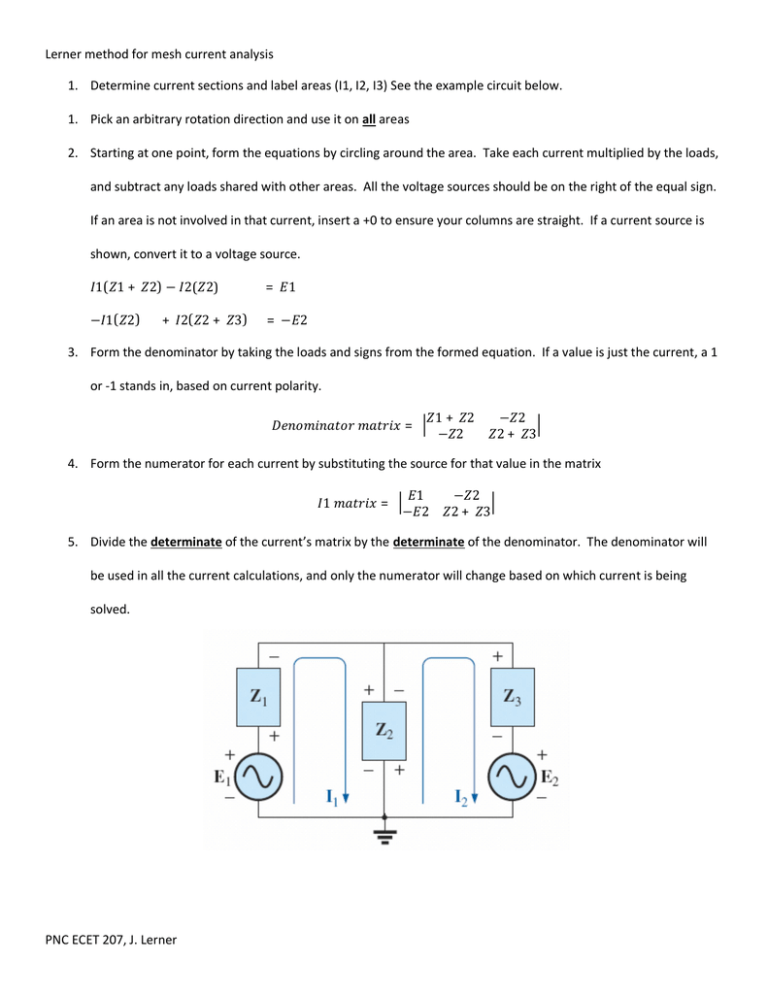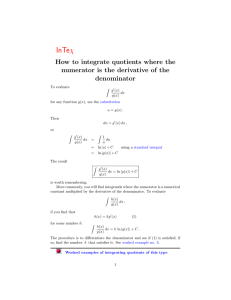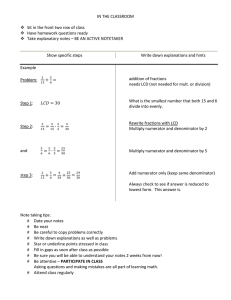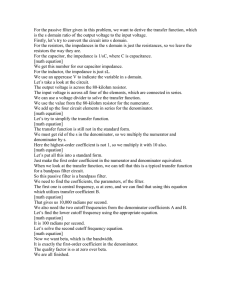PNC ECET 207, J. Lerner Lerner method for mesh current analysis 1
advertisement

Lerner method for mesh current analysis 1. Determine current sections and label areas (I1, I2, I3) See the example circuit below. 1. Pick an arbitrary rotation direction and use it on all areas 2. Starting at one point, form the equations by circling around the area. Take each current multiplied by the loads, and subtract any loads shared with other areas. All the voltage sources should be on the right of the equal sign. If an area is not involved in that current, insert a +0 to ensure your columns are straight. If a current source is shown, convert it to a voltage source. 1( 1 + 2) − 2( 2) = 1 − 1( 2) + 2( 2 + 3) = − 2 3. Form the denominator by taking the loads and signs from the formed equation. If a value is just the current, a 1 or -1 stands in, based on current polarity. = 1+ 2 − 2 − 2 2+ 3 4. Form the numerator for each current by substituting the source for that value in the matrix 1 = 1 − 2 − 2 2+ 3 5. Divide the determinate of the current’s matrix by the determinate of the denominator. The denominator will be used in all the current calculations, and only the numerator will change based on which current is being solved. PNC ECET 207, J. Lerner Lerner method for Nodal Analysis 1. Determine the number of nodes, determined by different voltage levels separated by loads. Ground is assumed to be zero volts and is not included. See the example circuit below. 2. Form the equation by adding (1/Load) for every load that is directly connected to the node for that equation. Subtract all shared nodes in another variable in the equation. Each load is shown as 1/Z. Each source is accounted for in its own column, with sign showing polarity relative to the node. If a voltage source is shown, convert it to a current source. 1 = + 1 =− 1 + 1 1 + 1 − 1 + = = −( ) 3. Form the denominator by taking the loads and signs from the formed equation. 1 + 1 = − + 1 1 − 1 1 + 1 4. Form the numerator for each voltage by substituting the source for that value in the matrix − = −( ) 1 1 + 1 5. Divide the determinate of the voltage’s matrix by the determinate of the denominator. The denominator will be used in all the voltage calculations, and only the numerator will change based on which voltage is being solved. PNC ECET 207, J. Lerner




